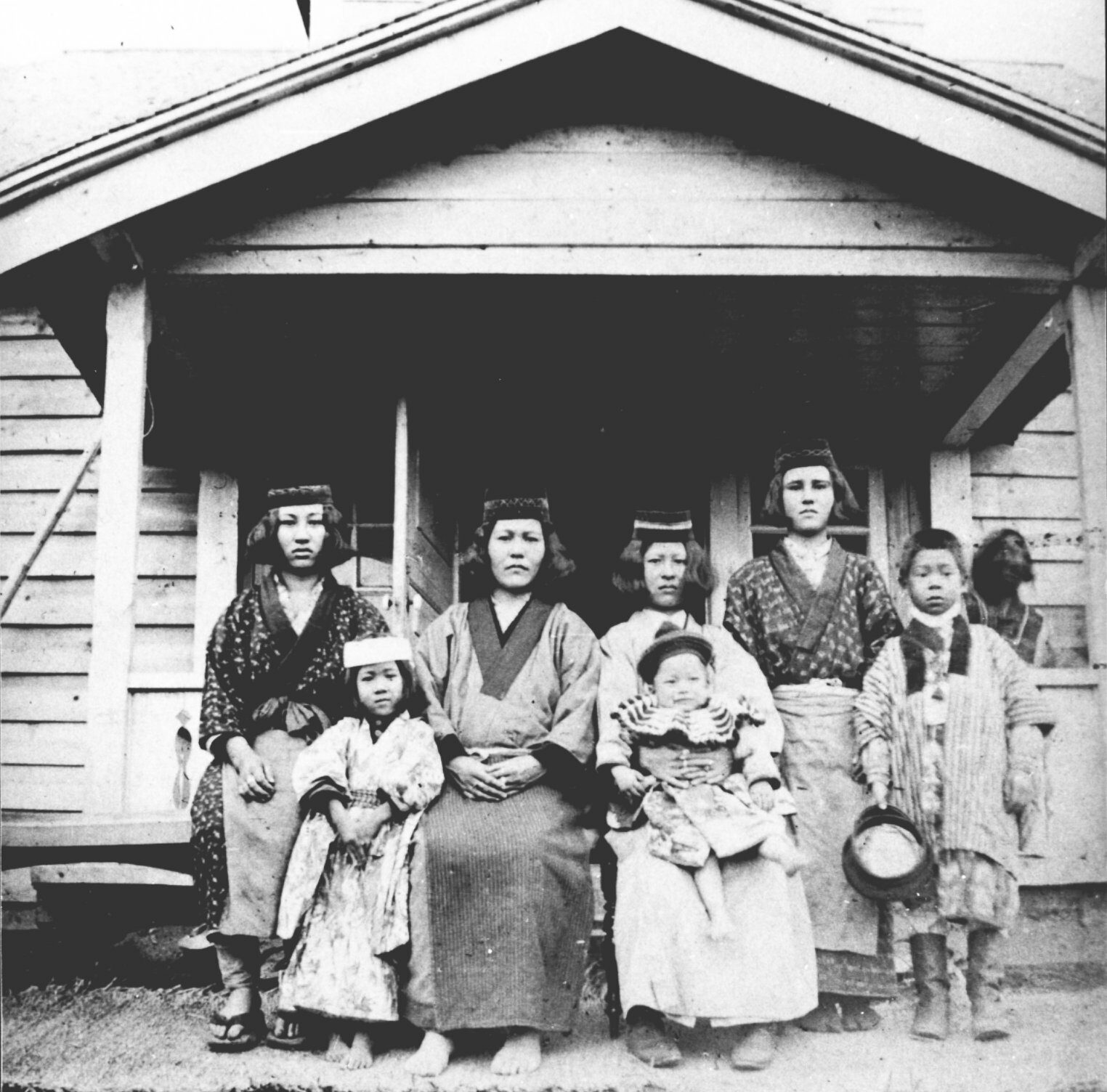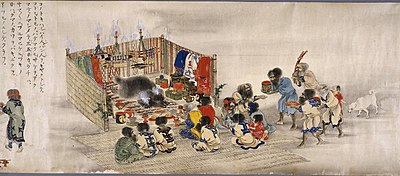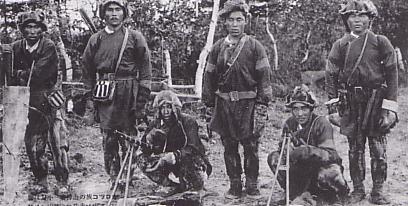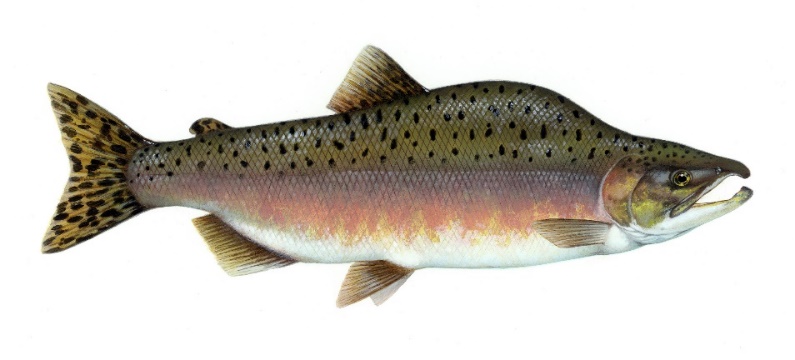
Ethnography
Ainu People
Activities
The Ainu were the people who aroused Piłsudski’s keenest interest.
In fact, Piłsudski is the most famous for his pioneering research on the language and culture of the Ainu people. It was among the Ainu that he met the future mother of his only children: his son Sukezō, born in 1903, and his daughter Kiyo, born in 1905. United in a traditional nuptial rite, Chūsamma (Ćuxsamma, Cuhsanmah, or Shinkinchō in Japanese) was several years younger than Bronisław and never left Sakhalin, despite Piłsudski’s efforts in 1905 to return to his home country together.
Piłsudski was encouraged to take up the study of the Ainu people by another exile, Lev J. Sternberg, with whom Piłsudski had previously shared his experience in studying the Nivkh people (called Gilyak at that time). The Ainu were a great enigma in those days and still are today. It was increasingly small and mysterious people, who was distinctly different from the Nivkh and the Orok (also known as Uilta) people related to the Tungus tribes. The Ainu physically resembled Caucasian and Austronesian peoples. They inhabited essentially only the southern part of Sakhalin, on both western and eastern coasts, with small concentrations in the north as well as in the neighboring Kuril Islands. Because the Ainu were different from the local population – the Tungus and Manchurian tribes – they inspired many scientists to study. They were also interesting to the Russians, because the Ainu in Sakhalin worked closely with both Russian and Japanese fishers catching fish, sea animals, and harvesting sea kale (wakame in Japanese) in the waters around South Sakhalin, and showing considerable skills. It was widely known that besides Sakhalin and the Kuril Islands, they also lived in Hokkaido belonging to Japan.
Piłsudski wrote that he had been captivated by the Ainu speech – quiet, soft, calm, and melodic, and by their noble gestures, which were in a bizarre way contrasting to the vigorous and harsh pronunciation of other peoples. He wrote about his encounter with them in 1912:
The whole 18 years and more of my sojourn in the Far East was involuntary. Constantly longing to return to my native land, I strove as much as I could to get rid of the painful feeling that I was an exile, in bondage and torn from all that was dearest to me. I therefore naturally felt attracted towards the natives of Saghalien, who alone had a true affection for that country, their immemorial dwelling-place, detested by those who formed the penal colony there.
(An excerpt from the introduction to “Materials for the Study of the Ainu Language and Folklore”, Kraków 1912)
Although Piłsudski had already come into contact with the Ainu during his initial period of exile on Sakhalin, he carried out most of his research on their language, culture, and customs between 1902 and 1905. That was when, having already completed his sentence of exile and having worked as a curator at the museum in Vladivostok, he traveled again to Sakhalin at the request of the Russian Imperial Academy of Sciences with the task of studying the Ainuand the Orok (Uilta) people. In addition, in the summer of 1903, he traveled in the company of Wacław Sieroszewski (the expedition leader) to the Japanese island of Hokkaido, where they studied the Ainu people together – Sieroszewski as an anthropologist and Piłsudski as a researcher of language and spiritual culture. After completing his mission with Sieroszewski, Piłsudski continued his research until the outbreak of the Russo-Japanese War and his departure from Asia for Europe. After his return to Poland, he worked on the materials he brought, trying to interest the Polish scientific community in them.
Piłsudski had the last opportunity to meet with the Ainu people and collect scientific materials during the Japan-British Exhibition in London in 1910. Piłsudski then was able to collect about fifty stories and other folklore data from the Ainuwho were brought to England to make the exhibition more attractive. According to Sieroszewski, during his stay in exile, Piłsudski “collected 10,000 Ainu words, 6,000 Gilyak words, 2,000 Orok words, a lot of fables, songs, legends, and customs, lots of photographs, and the world’s only collection of 100 phonograph cylinders.”
The result of the work, performed with many difficulties after his return to Galicia, was the publication of this outstanding work entitled “Materials for the Study of the Ainu Language and Folklore, Collected and Prepared for Publication by Bronisław Piłsudski, under the supervision of J. Rozwadowski”. It was published in English in September 1912 by the Academy of Arts and Sciences in Kraków. To this day, it is regarded as one of the fundamental works in the study of the Ainu people in the world.
It is available digitally on polona.pl and in print in the publication titled “The Collected Works of Bronisław Piłsudski”, vol. 2, edited by Alfred F. Majewicz, Mouton de Gruyter, Berlin, New York 1998.
The best way to learn about Piłsudski’s achievements is to imagine the journey he made along both coasts of the southern part of Sakhalin, traveling by boat in the ocean and rivers, on horseback and in a horse-drawn carriage, on foot, and on a reindeer sleigh… Wherever he went, he took notes, occasionally photos, or used an Edison phonograph to record speech on wax cylinders.
Thus, we are recreating the path of Bronisław Piłsudski’s travel during the period when he studied the Ainu and Orok peoples.
See: Activities/Ethnography/Travel Path of Bronisław Piłsudski…




